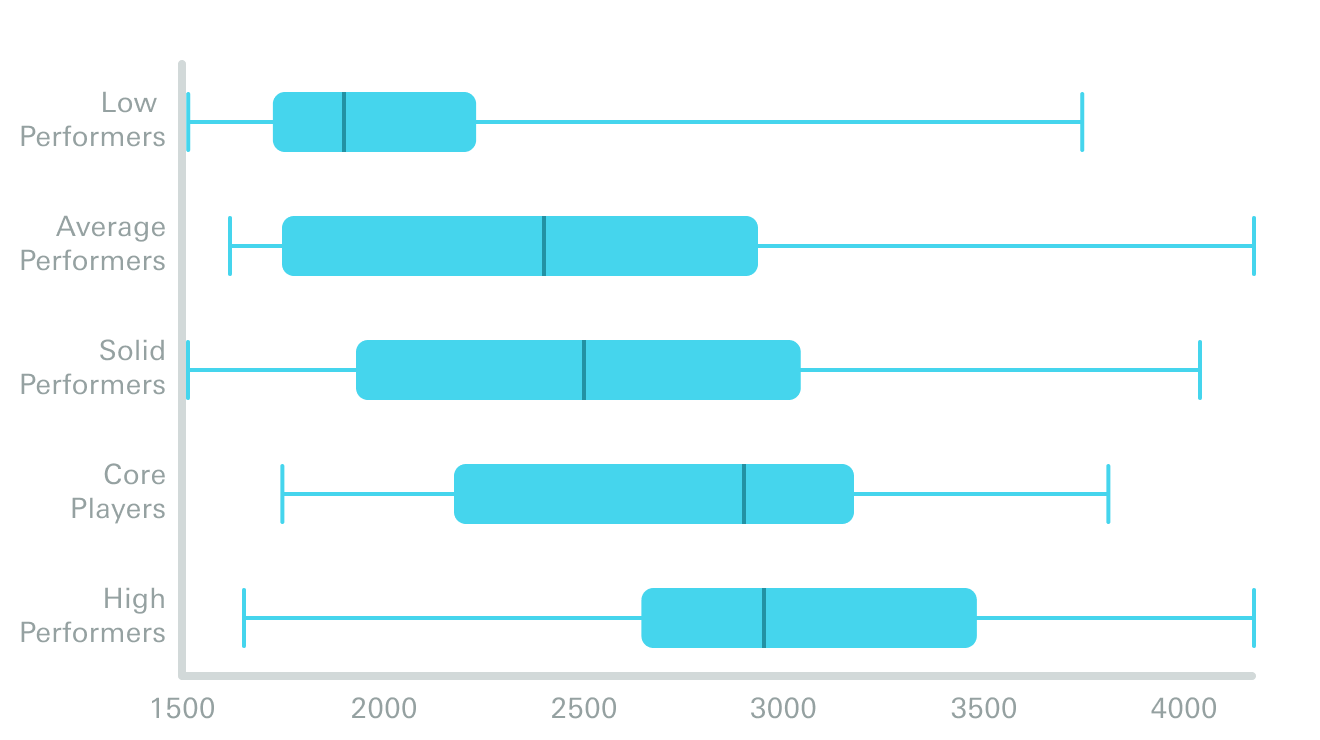The way you treat low performers affects everyone.
You’ve made good hiring decisions. You’ve invested in training and onboarding. You’ve staffed your team adequately. You’re responsive when problems come up. And yet, you’re faced with low performers on your team. What should you do?
First, we’ll cover how to know when you have a performance problem (or what else it could be). Then, we’ll explore how to address low performance in a way that considers everyone involved, including teammates and colleagues.
How do I know when someone is a low performer?
It seems like an obvious question, but there are a few scenarios that all look like poor individual performance when they have a number of causes. Fortunately, some situations are relatively easier to solve and can be addressed quickly.
Needing to adjust to a new role or company
Some new employees may have more trouble than others at first. If your company’s working style is new to them, or very different from their previous experiences, they may need more time and guidance to get to the performance level you expect. Here, you can increase mentorship and provide more examples of high-quality work to see if this is the issue.
By automating your onboarding data collection through surveys, you can sample new employees’ and their managers’ feedback on the clarity of role expectations, use of skills and abilities, and detect early signs of potential person-job lack of fit.
Low motivation
Typically, motivation issues are more about the way an employee’s work is designed and less about their personality than you may think. Enhancing the work employees are doing based on our psychological needs (autonomy, belonging, and challenge) and the characteristics of their job (feedback, variety, impact, completeness, and autonomy).
Autonomy is worth repeating: when we don’t have control over our decisions, we’re instantly demotivated. With this challenge, you can try to increase motivation through redesigning the job or empowering employees to practice job crafting.
Not fitting with the team or manager
We’ve all had a bad teamwork experience. A potentially high performer could be a bad personality fit with their team or not work well with their leader’s management style. Their poor performance could be the symptom of a deeper team issue that all members are feeling.
If it’s a team issue, some work could be rearranged with another team, tasks could be spun off into individual projects, or you could swap team members.
If it’s a leadership challenge, consider leadership training for the manager, switching to a new supervisor to try a new fit, or looking into the leader’s performance more broadly as they may be an abusive supervisor.
Plain old poor performance
Not everyone is a good fit for every role. If you’ve eliminated the other options or you’re dealing with harassment, bullying, or violence from the person of interest, you need to take decisive action. Read on to see why your handling of low performers affects other employees’ motivation, fairness, and the overall culture.
How should I address low performers, and why?
The equity ratio, disrupted
We all compare ourselves to others: it’s unavoidable.
If our colleagues are putting in less effort or good performance than we are and getting equal or higher rewards than we are, we get demotivated. Comparing this ratio of inputs to outputs drives what we think is fair. In this way, keeping or rewarding low performers hurts the fairness, equity, and motivation of the employees around them.
These employees may respond by lowering their efforts on non-essential work tasks or upping their counterproductive actions to strike a balance between what they’re giving and what they’re getting.

The fair process problem
When the process is fair and transparent, we are more likely to accept the outcome. Even if it’s not in our favour!
In most companies, workers don’t know what to expect when they perform well or badly. By explaining how you address performance issues early on and sticking to those guidelines when it happens, you make work more fair and predictable for all employees. The reasons for low performance above are a good place to start.
Then if someone is let go for poor performance, high performers won’t be fearful that they are next in line. If you already have a performance system in place, track the time when someone is detected as a potential low performer. You should be noting this in your HRIS or performance management system, so you can measure the time from detection to performance improvement, position change, or contract termination.
One way to track performance accountability is to survey your employees on three things:
- how well do they understand your performance standards,
- can they link their actions with company outcomes, and
- what is the quality of performance conversations with their team leaders. Other than qualitative reviews through surveys, you can also track promotion velocity for different groups to detect potential bias in the way different employee groups are treated.
The culture challenge
One way to think about company culture is “the worst behaviour you tolerate”. Mishandling poor performance can erode your company culture, because it sends a message that acting badly is acceptable at your organization. This applies to many scenarios, from excusing sexual harassment to promoting workers that take credit for others’ effort.
Once the bar has been lowered, being consistent means continuing to accept that behaviour. If your core values are defined, you need to consistently check if people who act against those values are held accountable.
One way to keep an eye on the impact of performance on culture is to use Denison’s culture model to track whether employees are held accountable for their actions, or team diagnostics framework like TDS to assess whether effort in the workplace is spread evenly across team members.

From the Talent Management series: